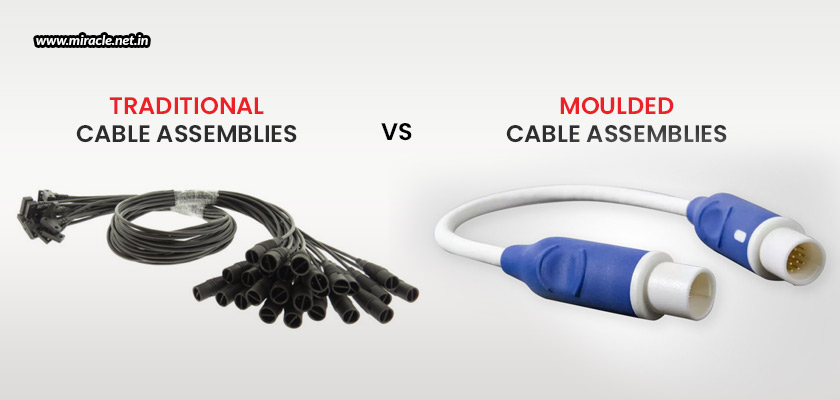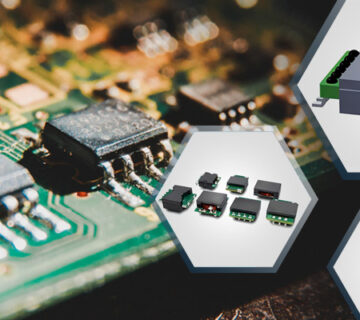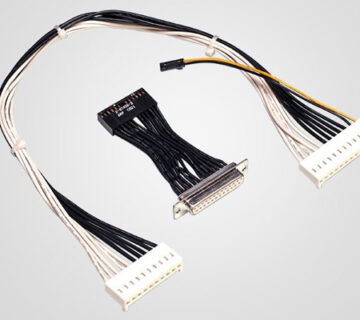When choosing between a moulded cable assembly and its conventional equivalent in the dynamic world of electronic devices and connection solutions, there are significant implications for overall functionality, performance, and reliability. The selection between the two takes into account a number of subtle elements, such as design flexibility, the application, cost considerations, and resilience to environmental factors. This examination of the crucial differences highlights how, in the dynamic world of electronic connectivity, selecting between moulded and conventional cable assemblies may have a revolutionary effect.
A synopsis of traditional and moulded cable assemblies
Connectors, conductors, insulation, and shielding are all part of the traditional cable assembly building process. Electrical contact is facilitated by the connectors; signals are transmitted by the conductors; electrical interference is prevented by the insulation; and external electromagnetic interference is prevented by the shielding. Although this type of construction is fundamental, it exhibits limitations in terms of design flexibility, and is susceptible to environmental variables, which is what has prompted research into advanced alternatives like moulded cable assemblies.
By covering connections and cable joints with materials like thermoplastic, moulding transforms the entire cable construction. This process improves longevity by reducing strain and protecting against external influences. Encapsulation of components like insulators and conductors guarantees a sturdy and well-assembled framework. With its improved dependability and customizable choices to meet changing connection demands, this invention of moulded cable assembly outperforms conventional techniques.
Design and customization
Traditional cable assemblies have restricted options and flexibility due to design restrictions, which limit their applicability to a wide range of applications. There are obstacles in the way of achieving ideal strain relief, which might affect performance and durability. Furthermore, inconsistent installation methods might result from different cable management strategies, raising possible dependability issues. The aforementioned constraints underscore the growing requirement for advanced solutions, like moulded cable assemblies, that provide greater design adaptability and seamless integration to augment dependability across a range of electronic applications.
With its increased flexibility and wide range of customization choices, moulded cable assemblies reinvent design possibilities and enable tailored options to satisfy project-specific requirements. Strain relief is immediately included into the moulded structure, which increases longevity and reduces the possibility of stress-related failures. Additionally, the integrated and dependable structure that is guaranteed by the efficient cable management found in moulded designs makes installation procedures easier. Together, these characteristics set moulded cable assemblies apart as a versatile and adaptive option that can be tailored to meet the changing needs of contemporary electronic applications, while maintaining reliable performance.
Performance and reliability
Traditional cable assemblies are susceptible to environmental influences, such as moisture, temperature changes, and other external forces. Potential points of failure in connector joints introduce reliability concerns that affect the assembly’s overall performance. Along with the inevitable wear and tear that comes over time, there are also maintenance issues. These drawbacks highlight the need for more robust solutions in demanding applications, which has prompted research into cutting-edge substitutes like moulded cable assemblies to reduce environmental concerns and guarantee sustained dependability across a range of operating conditions.
Moulded cable assemblies exhibit exceptional performance and dependability, providing enhanced resilience against environmental elements like chemicals and moisture. The use of cutting-edge materials guarantees improved durability and structural integrity, which makes them perfect for demanding applications. Significantly, the lack of connector joints lowers the possibility of failure, and offers a more durable and dependable solution. These characteristics work together to establish moulded cable assemblies as a dependable option in settings where conventional cable assemblies can falter, highlighting their capacity to provide dependable performance and durability under challenging operating conditions.
Applications and industries
Traditional cable assemblies continue to be relevant in a number of industries, most notably telecommunications, where their standardization fulfils the industry standards for connectivity. But in harsh contexts, including industrial settings, where exposure to extreme environments and heavy use might impair their function, restrictions occur. Under these conditions, the traditional design might not be able to provide the robustness and endurance needed for long-term, dependable operation. In order to maintain seamless communication in a variety of demanding applications, it is critical to investigate alternative options, such as moulded cable assemblies, as industries change and demand more reliability.
Because of their adaptability and versatility, moulded cable assemblies are becoming more and more popular in a variety of sectors. They provide accuracy and dependability in medical applications, and the automobile industry gains from their robust and efficient design. Moulded cable assemblies are used in aircraft, and fulfil strict performance requirements. Their capacity to adjust to difficult conditions, such as exposure to high temperatures and vibrations, greatly enhances overall dependability. As technology develops, the expanding range of applications for moulded cable assemblies positions them as a vital component across several industries, providing solutions tailored to the particular requirements of each, while guaranteeing robust and dependable connectivity.
Cost considerations
Traditional cable assemblies include expenses associated with connections, conductors, and insulation materials during the production and installation processes. Long-term maintenance expenses should be taken into account since wear and environmental conditions may require replacements or repairs, which might have an effect on the overall cost. When evaluating whether traditional cable assemblies are economically feasible, it is important to take into account both the initial costs and ongoing maintenance requirements. This is particularly important in situations where there are frequent or harsh environmental requirements, as the total cost of ownership may have an impact on the choice made.
Although the initial cost of moulded cable assemblies may be slightly higher than that of their traditional equivalents, the long-term cost reductions are significant. The use of cutting-edge materials and integrated design helps to minimize the need for frequent replacements, lowering maintenance costs. Over time, moulded cable assemblies become even more cost-effective due to their longer lifespan. Even though moulded cable assemblies may need a larger initial investment, their increased longevity, reduced maintenance requirements, and durability make them a wise and cost-effective option with a strong return on investment across a range of applications and sectors.
Moulded cable assemblies are unquestionably leading the way in the ever-changing world of technology. The combination of cutting-edge design, a wide range of customization possibilities, enhanced performance, and increased dependability positions moulded cable assemblies as the advanced alternative for a variety of applications. One of the major moulded cable assembly manufacturers that greatly contributes to this paradigm change is Miracle Electronics, whose proficiency in creating these products enhances the advantages, guaranteeing maximum performance and longevity. Although traditional cable assemblies are still valuable in certain scenarios, the industry’s move to moulded alternatives represents a revolutionary path. Miracle Electronics embodies this forward-thinking strategy with its dedication to state-of-the-art production, promising a connectivity landscape that is resilient, effective, and flexible enough to meet the ever-changing needs of contemporary technology. All in all, adopting moulded cable assemblies turns into a strategic decision rather than merely a choice.




